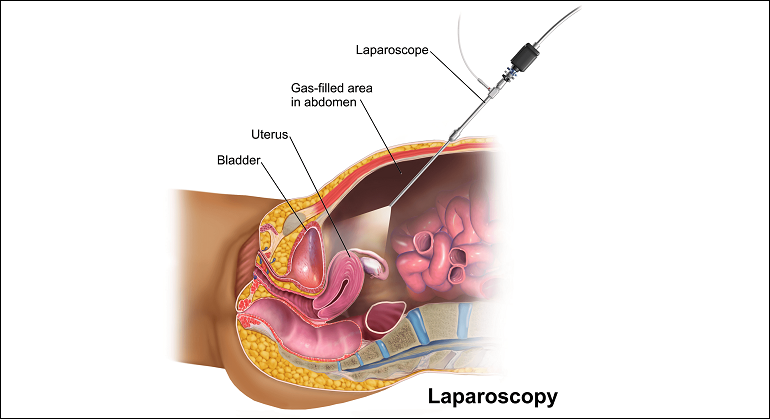
Fibroids, scar tissue, endometriosis and blocked fallopian tubes are all causes of female infertility. Laparoscopy is a surgical procedure that allows a physician to examine your uterus, ovaries and fallopian tubes to determine if any of those causes are present. If your physician determines the cause of infertility during the procedure, it may often be treated on the spot with a surgical instrument inserted through a small incision in your lower abdomen. In cases of severe tubal disease or scar tissue, in vitro fertilization may be your best option for conceiving a child.
Laparoscopy, a short procedure done under general anesthesia, is usually performed in a hospital or surgery center. Once the anesthesia takes effect, a needle is inserted into your abdomen and a harmless gas is injected through the needle. The gas raises the abdominal wall so the physician can see your reproductive organs more clearly. Once the gas is inserted, the needle is removed and a laparoscope, a narrow, fiberoptic telescope, is inserted through a tiny incision. A probe, used to move and lift organs to see hidden areas, is inserted through another small incision in your lower abdomen. Scissors may be used to cut out scar tissue, and lasers or electrocautery may be used to treat endometriosis. The injection of dye through the tubes, similar to HSG, may also be performed at this time to detect blockage in the fallopian tubes.
You can expect to feel sore and tired for a few days following the procedure. You may feel pains caused by gas bubbles from the procedure in your shoulders and under your diaphragm. You will most likely have three or four scars resulting from the procedure - one in your navel and others in your lower abdomen. Infection is rarely seen after laparoscopy. Signs of infection include fever, swelling or redness around the incision or stitches, burning during urination or frequent urination and discharge from the incision.
Laparoscopy, a short procedure done under general anesthesia, is usually performed in a hospital or surgery center. Once the anesthesia takes effect, a needle is inserted into your abdomen and a harmless gas is injected through the needle. The gas raises the abdominal wall so the physician can see your reproductive organs more clearly. Once the gas is inserted, the needle is removed and a laparoscope, a narrow, fiberoptic telescope, is inserted through a tiny incision. A probe, used to move and lift organs to see hidden areas, is inserted through another small incision in your lower abdomen. Scissors may be used to cut out scar tissue, and lasers or electrocautery may be used to treat endometriosis. The injection of dye through the tubes, similar to HSG, may also be performed at this time to detect blockage in the fallopian tubes.
You can expect to feel sore and tired for a few days following the procedure. You may feel pains caused by gas bubbles from the procedure in your shoulders and under your diaphragm. You will most likely have three or four scars resulting from the procedure - one in your navel and others in your lower abdomen. Infection is rarely seen after laparoscopy. Signs of infection include fever, swelling or redness around the incision or stitches, burning during urination or frequent urination and discharge from the incision.
